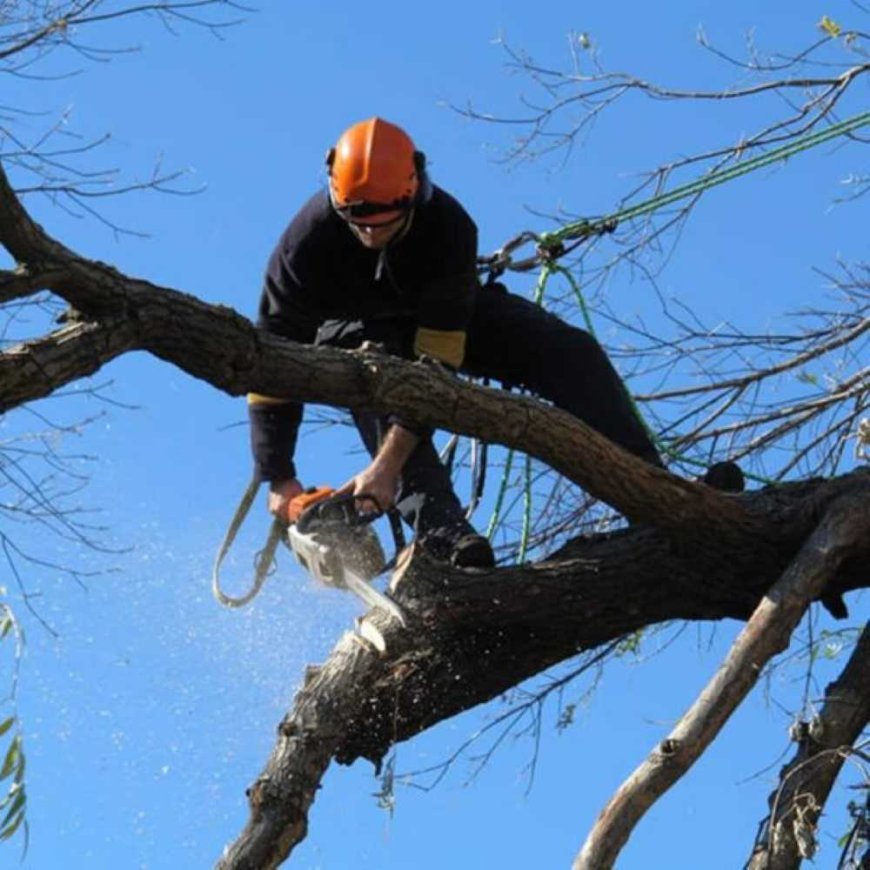The Ultimate Guide to Tree Pruning: Tips, Techniques & Timing
Tree pruning is part science, part art—and all about giving your trees the care they deserve. Whether you’re looking to tidy up your yard or protect your home from falling limbs, the right pruning techniques can make all the difference.

Tree pruning isnt just about keeping your trees neat and tidyits about ensuring long-term health, safety, and beauty. Whether you're a homeowner wanting to manage your landscape or a gardener trying to boost fruit yields, this guide covers everything you need to know.
? Introduction to Tree Pruning
?? What Is Tree Pruning?
Tree pruning is the intentional removal of branches to improve the structure, health, and aesthetics of a tree. It includes trimming away dead or overgrown branches and making strategic cuts for better growth.
? Why Tree Pruning Matters
Proper pruning:
-
Improves air circulation
-
Prevents disease
-
Encourages strong structure
-
Reduces the risk of falling limbs
? Benefits of Tree Pruning
? Improves Tree Health
By removing dead, diseased, or damaged limbs, you stop problems from spreading and give your tree room to thrive.
? Enhances Appearance
Shaping a tree can make your whole yard look more polished and well-maintained.
? Boosts Fruit Production
For fruit trees, pruning is essential to:
-
Allow more sunlight
-
Promote fruiting wood
-
Improve harvest quality
?? Increases Safety
Pruning keeps branches away from power lines, roofs, and walkways, reducing risks to your property and loved ones.
? Types of Tree Pruning
?? Thinning
Selective branch removal to improve airflow and light penetration.
?? Crown Raising
Removing lower branches to clear space under the canopy for foot or vehicle traffic.
? Crown Reduction
Reducing the overall size of a tree without harming its natural shape.
? Deadwooding
Removing dead or dying branches before they fall unexpectedly.
? Pollarding
A method involving regular pruning of young trees to control their shape and size long-term.
? When Is the Best Time to Prune Trees?
?? Winter Pruning
Ideal for most trees. Pruning during dormancy:
-
Reduces stress
-
Minimizes sap loss
-
Encourages vigorous spring growth
?? Summer Pruning
Best for slowing growth and removing unwanted growth quickly, like suckers and water sprouts.
? Seasonal Considerations by Tree Type
-
Spring-blooming trees: Prune after flowering
-
Fruit trees: Late winter
-
Evergreens: Early spring or mid-summer
?? How to Prune a Tree Correctly
? Tools Youll Need
-
Hand pruners (for small branches)
-
Loppers (for medium branches)
-
Pruning saw or pole pruner (for higher limbs)
-
Gloves and eye protection
? Identifying the Right Branches
Look for:
-
Crossed or rubbing limbs
-
Branches growing inward
-
Suckers and water sprouts
-
Diseased or dead wood
? Pruning Cuts Explained
Always cut:
-
At a 45-degree angle
-
Just outside the branch collar
-
With sharp, clean tools
?? Safety Tips
-
Never prune near power lines
-
Dont climb trees without safety gear
-
Know your limitscall a pro for tall trees
? Common Tree Pruning Mistakes
? Over-Pruning
Removing too much can shock the tree and lead to decline.
?? Flush Cutting
Cutting too close to the trunk damages the healing tissue. Always leave the branch collar intact.
? Pruning at the Wrong Time
Pruning during active growth can stress the tree or attract pests.
? Ignoring Disease Signs
Never ignore wilting, fungus, or insect activity. Address these before pruning to avoid spreading infection.
? Tree Pruning for Different Tree Types
? Deciduous Trees
Prune in late winter. Focus on:
-
Structure
-
Deadwood
-
Thinning for airflow
? Evergreen Trees
Require minimal pruning. Remove:
-
Dead limbs
-
Overgrowth obstructing light
? Fruit Trees
Prune yearly for:
-
Sunlight penetration
-
Maximum fruit yield
? Ornamental Trees
Prune for shape, safety, and to remove suckers or crossing branches.
??? DIY Pruning vs. Hiring a Pro
? Small Trees and Shrubs
Perfect for DIY with hand tools and basic safety.
? Large or Hazardous Trees
Call a licensed arboristtheyre trained and insured for risky jobs.
? Cost of Professional Pruning
-
Small trees: $100$300
-
Medium trees: $300$700
-
Large trees: $700+
?? Tools and Equipment for Effective Pruning
?? Hand Pruners
Great for stems and branches up to inch.
? Loppers
Cut through 12 inch branches with longer handles for leverage.
? Pole Pruners
For hard-to-reach limbs up to 12 feet high.
? Chainsaws and Safety Gear
Only use for large limbswith proper training and protective equipment.
? The Role of an Arborist in Pruning
? Certified Expertise
Arborists know how, when, and where to prune without damaging the tree.
? Tree Risk Assessment
They inspect for:
-
Structural defects
-
Disease
-
Safety concerns
? Custom Pruning Plans
Youll get a tailored strategy to:
-
Maximize tree health
-
Maintain shape
-
Prevent future issues
? Conclusion
Tree pruning is part science, part artand all about giving your trees the care they deserve. Whether youre looking to tidy up your yard or protect your home from falling limbs, the right pruning techniques can make all the difference.
Dont overthink itprune with purpose, timing, and care, or hire a pro to handle the tough stuff.
?FAQs
1. How often should trees be pruned?
Most trees should be pruned every 13 years, depending on age, species, and condition.
2. Can pruning kill a tree?
Yesif done incorrectly or excessively. Always prune with care or consult an expert.
3. Is it OK to prune trees in summer?
Yes, but only for light shaping or removing problem branches. Avoid heavy cuts in peak heat.
4. Whats the difference between trimming and pruning?
Trimming focuses on aesthetics; pruning targets health, structure, and safety.
5. Do young trees need pruning?
Absolutely! Early pruning helps them grow strong and balanced, avoiding issues down the road.
































